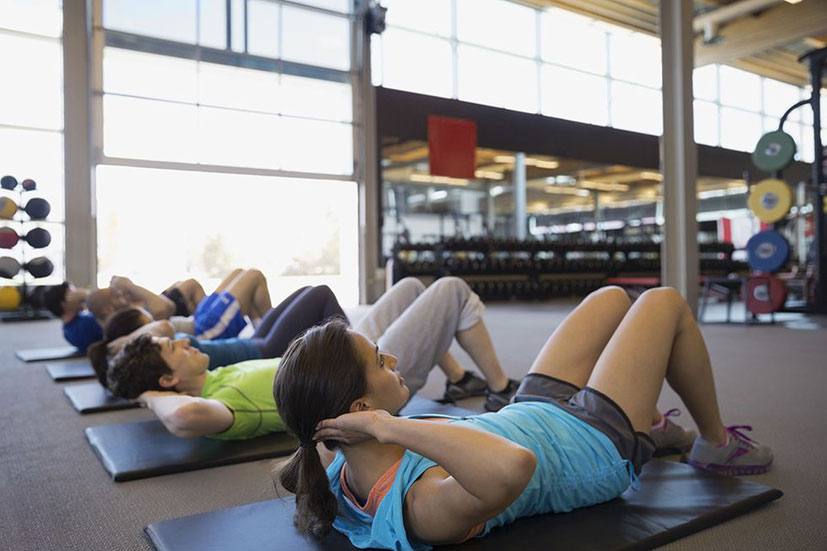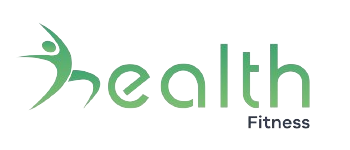What Muscles Do Planks Work? The Answer: A Lot
Planks can help work your core muscles, as well as your upper and lower body. There are different types of planks that may have slightly different benefits.

The plank is a classic exercise that works your muscles from head to toe.
Though you may dread the idea of a plank, you’ll reap many benefits from this simple and equipment-free move.
That said, you may wonder how it will get you in shape, what muscles it targets, and how to know whether you’re doing it correctly.
What muscles do planks work?
The plank is a full body exercise, meaning it targets muscles of the upper body, core, and lower body.
Core muscles
Though you’re balancing your body weight on your arms and toes, most of the work in a plank is done by your core. In particular, your rectus abdominis, obliques, and transverse abdominis are utilized.
The rectus abdominis is the top layer of muscles of your stomach. When body fat is low, these muscles are commonly visible and referred to as a “six pack”.
On the other hand, the transverse abdominis is the deep abdominal muscle layer known as the “corset” muscle. It helps cinch your waist and stabilize your back muscles.
Furthermore, your inner and outer obliques and spinal erectors (back muscles) are engaged during the plank. When the obliques on both sides of your body work in tandem, they also provide a stabilizing effect, particularly by holding the ribs and hips in alignment.
Upper body
The muscles of your upper body, such as the trapezius, rhomboid major and minor, latissimus dorsi, pectorals (chest muscles), serratus anterior, deltoids, biceps, and triceps, also work hard during a plank.
Lower body
Your core muscles and lower body are highly connected, which means both help stabilize your body during the plank.
In particular, you’re targeting your quadriceps (front of thighs) and gluteal muscles (buttocks), which are attached to your abdominal and lower back muscles. Collectively, these muscles help stabilize and strengthen your hips
The hamstrings also play a role. Because your positioning in a plank is facedown, you’re working against gravity’s pull to keep your body in alignment. In a plank, your hamstrings help with hip extension, keeping a straight line through your body from your trunk to your legs.
SUMMARY
The plank is considered a full body workout. In particular, it targets your abdominal and lower back muscles.
Benefits of the plank
There are many benefits of performing the plank exercise.
A strong core
Having a strong core is important for daily activities of living. From bending for grocery bags to swinging a golf club, your core plays a key role.
The plank exercise is excellent for muscular endurance — your muscles’ ability to sustain exercise for a period of time. It’s a type of isometric exercise, meaning you keep your muscles contracted in one position during the entire exercise movement.
Performing the plank on a regular basis has been shown to improve core strength and endurance.
SUMMARY
The plank is a great exercise for increasing core strength, reducing the risk of back injury, and improving athletic performance.
Lower risk of injury
Many core exercises can lead to injury. In particular, situps and crunches can put tremendous pressure on your neck and lumbar spine, especially when performed incorrectly.
However, the plank has been shown to activate the core muscles with lower compressive forces, which can reduce the risk of injury
May reduce lower back pain
A strong core has been shown to reduce lower back pain and the risk of back injury.
Your abdominal muscles support your lumbar spine (lower back), helping provide structural stability and assist with pelvis movement. Increasing stability in the lumbar spine may help reduce and prevent lower back pain.
That said, if you have chronic back pain, always seek the advice of a healthcare professional before starting a new exercise program.
Improved performance
Since your core is connected to both your upper and lower body, it plays a role in movement during athletic activity.
In terms of athletic performance, a strong core is associated with increased power output, maximum force, running performance, upper body rotation, and a lower risk of injury.
Though more research is needed, core stabilization exercises such as the plank paired with a well-rounded exercise program appear to be most effective at improving athletic performance.
How to do a plank correctly
Performing the plank properly will ensure you reap the greatest benefits. Though there are many versions of the plank, the two main types include the forearm plank and the straight-arm plank.
Forearm plank
This version of the plank is the most popular and uses your forearms to hold your body up. It’s considered the easier version of the two, but it will still challenge you.
- Start by lying on your stomach (prone position) with your elbows and forearms at your side. Ensure your elbows and shoulders are aligned.
- Slowly lift your torso off the ground by pressing into your forearms and toes. Contract your core as you rise, maintain a neutral spine and neck (avoid hunching or looking up), and keep your pelvis tucked inward (shift your pelvis forward to prevent your butt from lifting).
- Hold this position for as long as you can maintain proper form.
SUMMARY
The two main variations of the plank exercise include the forearm plank and the straight-arm plank. Maintaining proper form will help you reap the greatest benefits.
Straight-arm plank
The straight-arm plank is similar to the forearm plank, but it’s slightly more advanced and difficult.
- Start in a pushup position with your elbows and forearms at your side and palms facing down.
- Push your hands into the ground and raise your torso off the ground. Your body should look as if you’re in the upward position of a pushup. Ensure your hands and shoulders are aligned, your legs are straight, your feet are hip-width apart, and your core is engaged.
- Hold this position for as long as you can maintain proper form.
A person’s ability to hold a plank varies by their experience and core strength. Try to hold the position for a minimum of 10 seconds or longer.
Common mistakes when doing plank exercises
While the plank can be an excellent core exercise, some common mistakes that can compromise your results. Here are top things to avoid while performing a plank:
- Hunching your back. This reduces effort from your core and makes the exercise less effective. Instead, engage your core and keep your back in a neutral position.
- Lowering your hips. Lowering your hips forces your back to arch and puts excess strain on your lower back instead of your abdominals. Be sure your hips are aligned with your shoulders, knees, and feet.
- Raising your butt. Lifting your butt shifts your weight to your upper body rather than your abdominals. To prevent this, engage your core and tuck your pelvis forward.
- Holding your breath. Holding your breath makes the exercise more difficult and can put excess strain on your body. Focus on calm, controlled breathing.
- Pushing your stomach out. If you feel it’s hard to draw your belly button in or notice signs of diastasis recti, such as a doming of the abdominals, try a modified version of the plank. Drawing your abdominals in will better support your back.
To engage your core, imaging drawing your belly button inward toward your spine. This helps activate deep core muscles like the transverse abdominis and maintain a neutral spine position.
SUMMARY
When performing a plank, keep your core engaged, maintain a neutral spine, and be sure to breathe. This will help you perform the plank correctly and target the correct muscles.
Variations of the plank exercise
If you find the plank too difficult or are looking for an extra challenge, there are many variations of this exercise to try. Still, only attempt more difficult planks after you can successfully and safely perform a forearm and straight-arm plank for at least 15 seconds without losing your form.
1. Forearm plank with knees bent
This version of the plank is great for beginners.
- Start by lying on your stomach (prone position) with your elbows and forearms at your side. Ensure your elbows and shoulders are aligned.
- Slowly lift your torso and upper body off the ground by pressing into your forearms. In this version, keep your knees bent and touching the ground.
- Hold this position for as long as you can maintain proper form.
Though this version is easier than the traditional forearm plank, it still gives you an excellent core workout.
2. Side plank on forearm
The side plank is excellent for working your obliques, which are the sides of your abdominals.
- Begin by sitting on your right hip with your legs bent, keeping your hips, knees, and feet stacked. Lift your left arm straight into the air (if this is too difficult, keep your arm to your side).
- Push your right forearm into the ground to lift your torso and straighten your legs. Keep your core tight and ensure your hips are lifted. Your body should be close to a straight line.
- Try to hold this position for 20 or more seconds before switching sides.
3. Plank with side taps
This move provides an added challenge to the traditional straight-arm plank by incorporating leg movement.
- First, ensure the space around you is clear and free of obstructions.
- Starting in a traditional plank position, step your right leg out wider than your hip and tap the floor.
- Then, bring the leg back into the starting position.
- Repeat with your left leg.
- Complete 10–15 repetitions on each side while maintaining proper form.
Take your time with this move to ensure proper form and target your muscles effectively. Be sure to keep your core tight the entire time.
4. Plank with reach under
This move adds an extra challenge to the traditional straight-arm plank.
- Start in a traditional straight-arm plank position.
- Keeping your core tight, lift your right arm off the ground and reach under to touch your left hip. Then, return your right arm to the ground.
- Next, take your left hand and touch your right hip.
- Continue to alternate between hands for 20–30 seconds.
Avoid rotating your shoulders or hips during this movement. The goal is to keep your body in a straight line.
SUMMARY
Many variations of the plank are suitable for beginners and advanced exercisers. Be sure to only perform advanced planks when you can safely perform a standard plank.
The bottom line
The plank is a classic exercise that strengthens your body from head to toe.
In particular, the plank helps strengthen your core muscles, including your abdominals and lower back. Having a strong core is linked to reduced lower back pain, an improved ability to perform daily tasks, and enhanced athletic performance.
If you’re new to planks, be sure to start slowly and focus on proper form. This will help you target the correct muscles and reduce your risk of injury.
With many variations available, the plank is a great core workout for people of all exercise levels.
